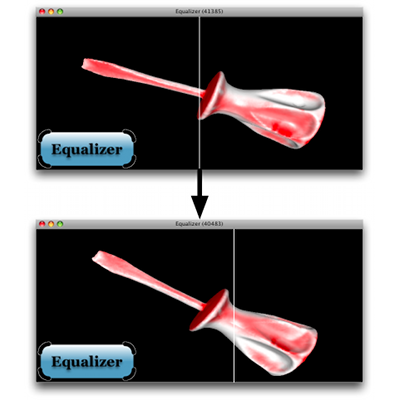The Load Equalizer automatically adapts the 2D tiling or DB range of a compound, balancing all render resources of a single output for optimal performance.
While pixel and stereo compounds are naturally load-balanced, the performance of 2D and DB compounds can often be improved by using load-balancing.
Using a load equalizer is transparent to the application, and can be used on any application for 2D, and on most applications for DB load-balancing. Some applications do not support dynamic updates of the database range, and therefore cannot be used with DB load-balancing.
Using a 2D or DB load-balancer will adapt the 2D split or database range automatically each frame. The 2D load-balancer exists in three flavors: 2D using tiles, VERTICAL using columns and HORIZONTAL using rows.
2D load-balancing increases the framerate over a static decomposition in virtually all cases. It works best if the application data is relatively uniformly distributed in screen-space. A damping parameter can be used to fine-tune the algorithm.
DB load-balancing is beneficial for applications which cannot precisely predict the load for their scene data, e.g., when the data is non-uniform. Volume rendering is a counterexample, where the data is uniform and a static DB decomposition typically results in a better performance.
For multi-view setups using 2D or DB compounds, a view equalizer will assign resources to each segment, and each segment uses a load equalizer to balance the rendering within the segment.



